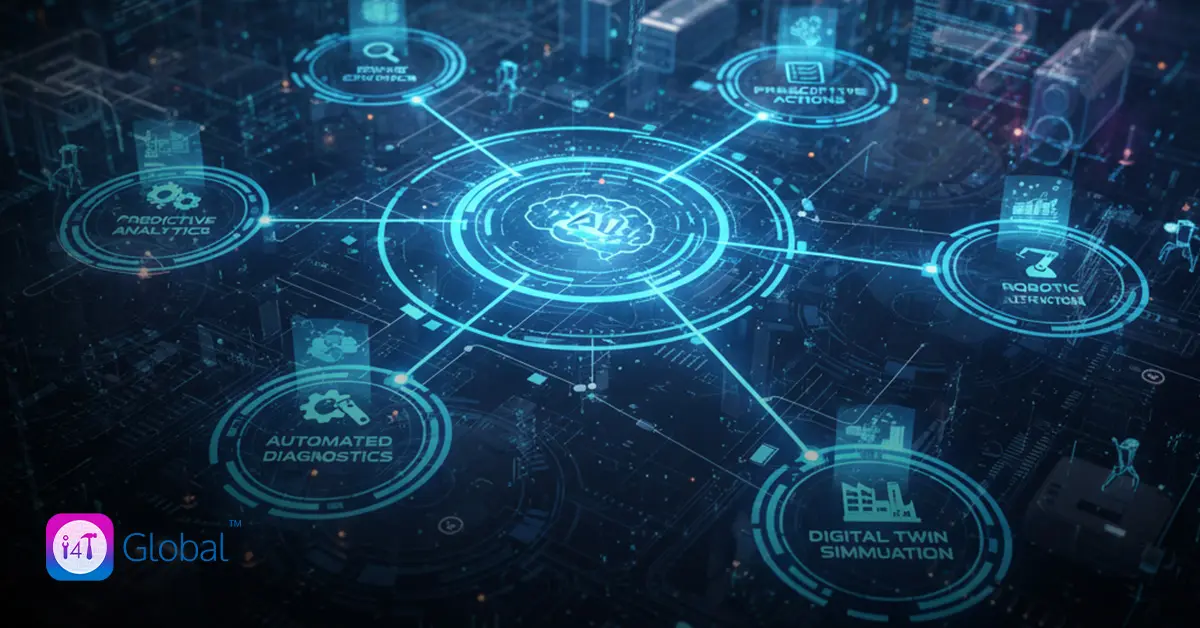Building maintenance is more than just keeping the structure looking good. It’s a highly critical task carried out by specialized individuals or teams. These teams need to ensure the safety, functionality, and durability of the building.
When done regularly, building maintenance prevents minor issues from turning into bigger problems down the line.
Let’s dive deeper into building maintenance essentials, challenges, and the role of technology in overcoming them.
Importance of building maintenance
The global building maintenance services market size will reach USD 612,983.7 million by 2028. Building maintenance plays a pivotal role in keeping occupants satisfied and providing a return on your asset investment.
Some of the reasons to carry out building maintenance include:
- Ensuring the safety of occupants and visitors: Regular property upkeep reduces the risk of accidents. Issues such as old wiring, weak building structures, or malfunctioning equipment can cause safety concerns. It also alerts occupants in case of emergencies. They can take safety measures, and evacuate if needed.
- Keeping the building looking good: Cracked walls, peeling paint, and mold build-up can leave a bad taste in the mouth. Well-maintained buildings can uplift the spirits of occupants and attract visitors.
- Enhancing the structural integrity: Issues like water leaks, cracks, and corrosion can impact the building’s useful life. If not attended on time, these can lead to more significant issues. This can compromise the building’s safety and lead to costly repairs.
- Keeping systems running smoothly: A building that has failing systems can be a nuisance for the occupants. Regularly inspecting systems live elevators, HVAC, hot water, electrical systems, and so on will ensure maximum uptime and occupant satisfaction.
- Maintaining property’s value: Well-maintained buildings can bring in higher rents and a great resale value. It attracts quality tenants, cuts down vacancy periods, and boosts the income of property owners.
Roles and responsibilities in building maintenance

Building maintenance requires the collaborative effort of several internal and external personnel and teams. Each role requires a specific set of skills, in contributing towards keeping the building in good working order.
Strata management, facilities management, and real estate management are some similar roles to building management.
Some of the roles in building maintenance include:
Maintenance manager: A maintenance manager oversees all the maintenance operations. This includes planning and budgeting, work order management, vendor management, ensuring safety and compliance, and record keeping.
Maintenance technicians: These are hands-on experts in the repair and upkeep duties. Generally, this is an in-house team that specializes in electrical, plumbing, HVAC, carpentry, tiling, roofing, etc. They carry out routine inspections, repairs, upgrades, and preventative maintenance.
Custodial staff: These workers carry out day-to-day activities that keep the building clean and tidy. General maintenance responsibilities include cleaning, sanitizing, waste management, and minor repairs such as changing a light bulb, etc.
External contractors: These are companies or solo operators. They make a great choice when in-house expertise is not available. They carry out highly specialized work such as elevator maintenance or landscaping etc. They also carry out large renovation projects and provide expert advice on specific maintenance and upgradation.
Industries that depend on building maintenance
While all structures need maintenance, certain industries rely heavily on building maintenance for several reasons. These range from the nature of their operations to the high number of occupants and how critical their services are.
Residential buildings: Buildings such as apartments, condos, and similar complexes are homes to individuals and families living in them. This makes their safety, comfort, and well-being a top priority for building managers. The upkeep of such buildings ensures that common facilities such as pools, gyms, elevators, etc. are clean, safe, and functional.
Commercial buildings: Office buildings, shopping malls, and business parks fall under this category. Regular maintenance provides a conducive environment for the business, ensures employee safety, and appeals to visitors.
Hotels and resorts: Guest experience is vital for managers of hotels and resorts. It includes keeping well-maintained rooms to ensure hygiene in common areas. Regular maintenance of these buildings provides a homely and relaxing environment to the people.
Healthcare: When it comes to hospitals, clinics, and medical centers, aesthetics is not the only concern. To prevent the spread of diseases, building managers must ensure proper maintenance. They also need to maintain medical equipment such as ventilators. Areas such as operation theaters must be functional, and patient wards must be safe and comfortable.
Education: These are hubs of learning activities and have a large volume of occupants, including young ones. Hence, schools, colleges, and universities need to be safe and hygienic. Upkeep of areas such as classrooms, labs, hostels, and cafes, requires extensive maintenance effort and vigilance by building managers.
Best practices in building maintenance
Best practices in building maintenance ensure the longevity and safety of the structure, optimize resources, and ensure occupant satisfaction.
Ensuring regular inspections
A comprehensive building assessment to evaluate its condition can identify existing and potential problems. Conducting regular building inspections also helps you create a maintenance schedule, ensuring better resource allocation and timely service.
Carrying out preventative maintenance
80% of maintenance professionals prefer this approach. Proactively conducting maintenance work for potential issues identified during regular inspections can help create a preventative maintenance strategy. This helps issues from turning into bigger problems. It also increases the asset’s lifespan and minimizes emergency repair requests.
Having an emergency response plan
No matter how good is your preventative maintenance strategy, unexpected issues can still happen. One of the best practices in building maintenance is to effectively and efficiently handle these emergencies. Adequately stocking inventory and training an emergency response team can reduce downtime and disruptions.
Focusing on sustainable maintenance
From optimizing energy consumption to eco-friendly waste management techniques, sustainable building maintenance practices are here to stay. As a building manager, it’s best to incorporate these in your maintenance strategy. It will help you cater to eco-conscious property owners and occupants.
Constant improvement through evaluation, training, and development
Collect feedback on your maintenance practices. Not only this, but you must also keep on improving by investing in training and development. This makes sure your maintenance teams are up to date with the latest maintenance trends and technologies out there. This will ensure you cater to the changing customer demands and keep occupants satisfied.
Challenges in building maintenance management

Building managers and maintenance teams come across several challenges. This can happen when they expand their portfolios and technology and consumer needs evolve.
Following can be some of the biggest challenges in building maintenance management:
Budgeting constraints: Lack of finances can result in deferred maintenance. It can also compromise quality when you hire cheap labor to complete work orders.
Aging structure: The older your building is, the higher will be the maintenance costs. Building managers also face challenges when retrofitting and installing new systems that are not compatible with existing ones.
Legislation changes: Building codes, safety standards, and environmental regulations keep on changing. Keeping oneself updated on these and ensuring compliance can come as a challenge.
The role of technology in building maintenance
With technology overtaking every industry, its role in building maintenance is no surprise.
Technology is playing a revolutionary role in building maintenance. It is helping to streamline processes, improve resource allocation, ensure compliance, and give more control to owners and occupants,
Building maintenance management software platforms like i4T Maintenance have been helping managers with:
Automation and control: The platform helps with efficiently allocating resources to the right job. It also makes it possible to access information on the go and prioritize tasks.
Streamlining work orders: Creating, allocating, tracking, and completing work orders ensures tasks flow smoothly from one step to the next.
Real-time progress monitoring: Building maintenance management software allows tracking of in-progress jobs. It sends updates and provides information to make data-driven decisions.
Safety and compliance management: The platform provides remote access to SLAs, best practices, and safety protocols. This minimizes the chances of non-compliance, reduces risk, and makes your business audit-ready.
Conclusion
Regular and efficient building maintenance is more than an operations-related task. It can enhance the safety of occupants and the value of the property. Many industries require building maintenance. However, it doesn’t come without its challenges.
Following best practices and adopting technology solutions like i4T Maintenance – Maintenance Management Software can help overcome these.
Contact us to learn more. Or book a demo to take a walk through our platform.
FAQs
Building maintenance is the regular upkeep of a building’s structure, systems, and equipment to ensure they are safe and functional.
Residential complexes, commercial buildings, hotels, healthcare, and educational institutions to name a few.
The age of the building, budget constraints, and regulatory changes are some of the common building maintenance challenges.
Building maintenance management software can help with streamlining workflows and monitoring progress. It can also assist with automation and control. Additionally, you will benefit from safety and compliance management tools.
Poor building maintenance can result in structural failure, safety hazards, and decreased property value. All of these can ultimately result in poor occupant experience and loss of profits.
Hot off the press!

With our cutting-edge technology and in-depth knowledge of how the Field Service Management sector operates, the i4TGlobal Team loves to share industry insights to help streamline your business processes and generate new leads. We are driven by innovation and are passionate about delivering solutions that are transparent, compliant, efficient and safe for all stakeholders and across all touch points.




